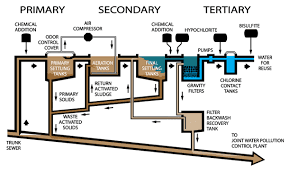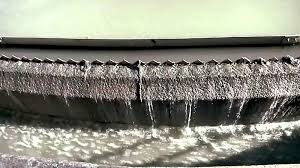From all that have been discussed in this course, one can without equivocation say that waste-water treatment plant is broken into units or effective performance.
The design of waste-water treatment units is in the opinion of the developer or the writer, the arrangement in sequence, the sizing and the use well fitted and quality materials in units to achieve the objectives of waste-water treatment and the end of the overall operation.
It is against the above background that there are stages or processes of waste-water treatment as we saw.
Traditional design procedures for waste-water treatment systems attempt to minimize total capital cost by considering steady state concepts for unit processes and design guidelines.
Recent work has minimized capital as well as operation and maintenance costs using a single objective function and steady state models which are flawed because plant inputs vary as much as seven fold during a 24-hour period.
Previous work using dynamic models for optimal design does not simultaneously consider both fixed and variable costs in a single objective function.
Read Also: How Creating Recyclable Products Support Effective Waste Management
The primary objective of waste-water treatment plant design is to provide treatment at a minimal cost while satisfying specific requirements. In least cost design studies, a total discounted cost is attained at the lowest possible level while satisfying a set of constraints.

These constraints include (a) a specified effluent quality, and (b) various physical and biological constraints.
In summary, Corrosion was defined as the rusting of metal in pipes or tanks due to the corrosive action of water, waste-water or soil. Scales which are deposits caused by the deposition of calcium carbonate on the inner surface of the water or waste-water treatment equipment pipes or tanks emanate as a result of corrosion.
The causes of corrosion in waste-water treatment plant was also discussed where you were made to know that bacteria in the slime under flowing sewage convert sulphates in the sewage into sulphides and the bacterial action then converts the H2S gas converted to sulphuric acid which causes corrosion in the crown of the pipe and this corrosion.
The types of corrosion were explained next and in this you learnt that they can occur on the outside of a pipe (due to corrosive soil) or on the inside of a pipe (due to corrosive water) Either outside or inside a pipe, the creation of the corrosion cell can be through electrolysis, oxygen concentration cells, or through galvanic action.
The effects are that it can cause economic, health, and aesthetic problems. Economic problems result from damage to pipes, storage tanks, valves, and meters.
To prevent corrosion, the design shall provide for self-cleansing velocity, good ventilation, low turbulence, flushing facilities, minimal periods of flow and minimum stagnation, etc.
Finally, under the design of waste-water treatment units you learnt: the meaning and concepts of design of waste-water treatment units, factors influencing the design of treatment units, indicators of system performance and design of unit and the efficiency and maintenance of treatment units.
Read Also : Definition of Corrosion and Causes of Corrosion in Waste-water Treatment Plant
Read Also: The Marvels of Mushrooms: From Culinary Delights to Medicinal Wonders

